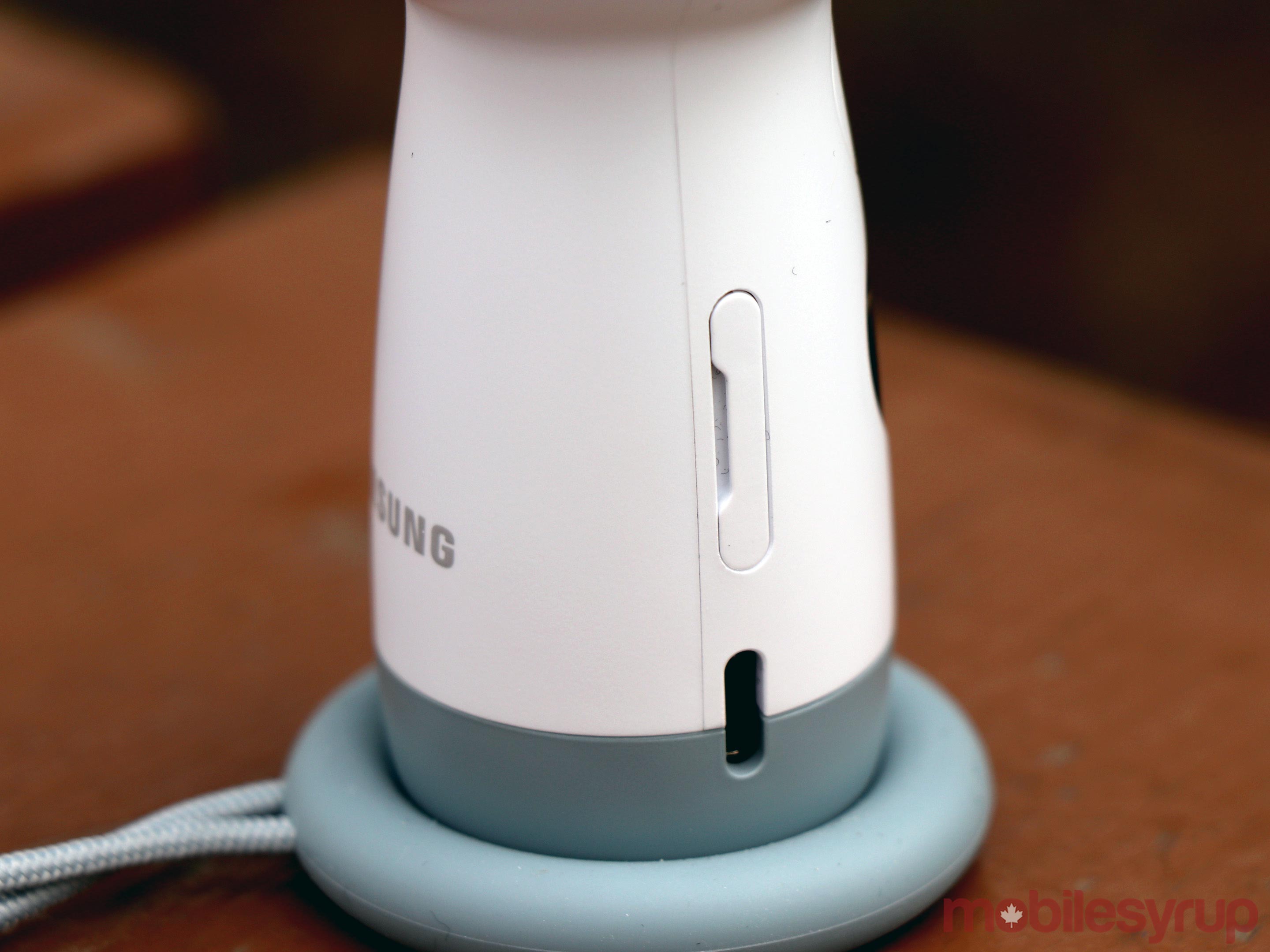
The Pros
- Smaller design is easier to wield
- Shooting in 4K at 24fps
- Live streaming capability
The Cons
- Resolution slashed in half
- Image quality takes a hit when zooming in
- Battery life isn’t any different
Samsung’s initial experiment with last year’s Gear 360 camera was a solid debut in an otherwise nascent category. By radically changing the form factor with the 2017 model, has it cut too many corners to make it more versatile?
The company has played up its ability to shoot in 4K resolution, and the smaller design makes the new Gear 360 far more pocketable and easier to deploy. All of that should make it a considerable step up from its predecessor, though it may depend on how you look at it.
The Note 7 debacle slightly derailed Samsung’s strategy to bridge together that device with the first Gear 360 and a new Gear VR headset. Only six months later, that strategy is now repeating itself with the Galaxy S8 and S8+ and a new headset that comes with a remote. Promoting 360-degree imaging doesn’t necessarily require the other pieces Samsung is offering, but enjoying the footage incurs limited options for the time being.
There’s promise in this new Gear 360, particularly because it tries to do more than its predecessor could.
Slimmer and trimmer design
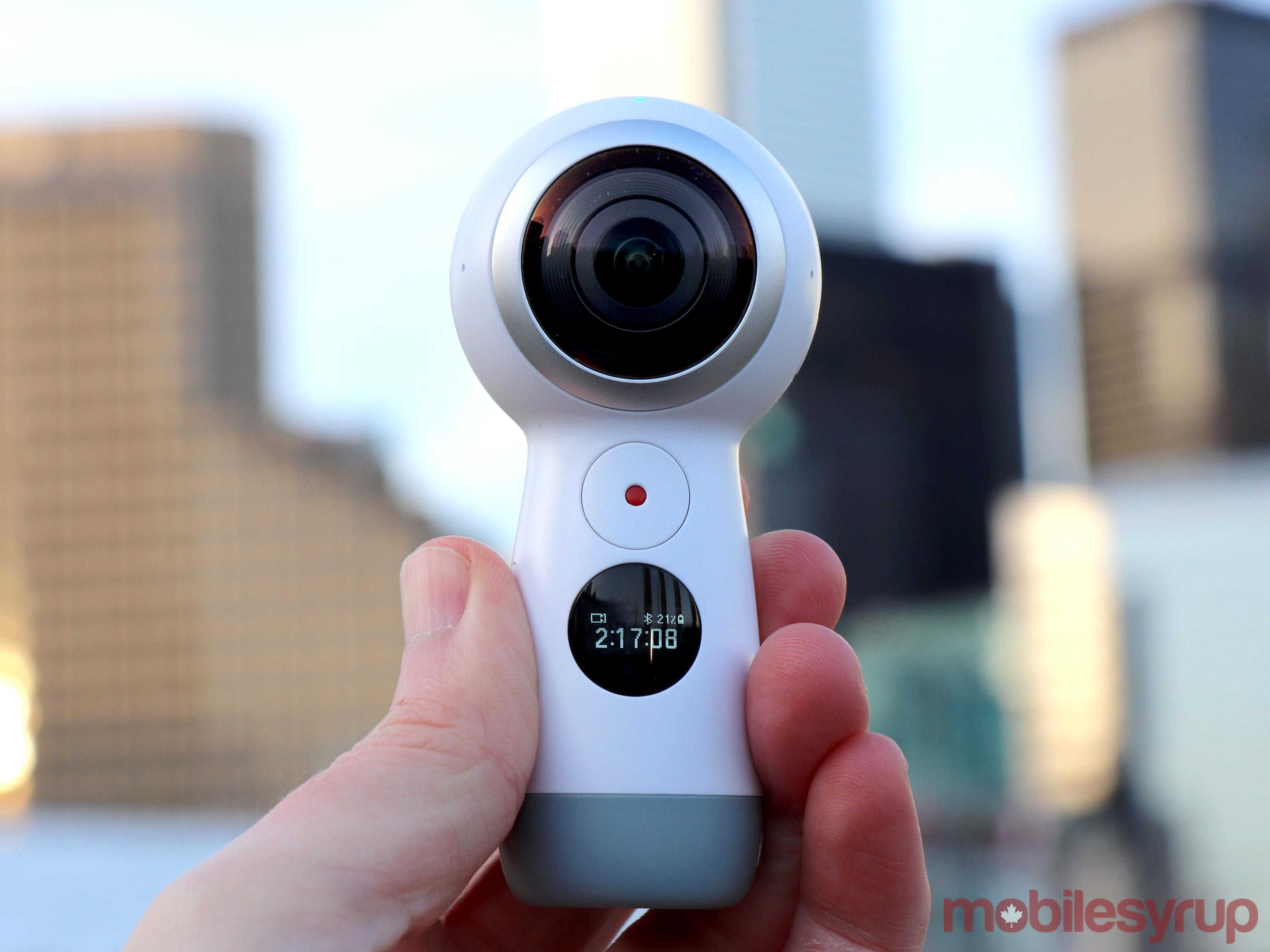
A number of changes needed to be made to shift the design, which we noted in a previous hands-on of the device. Where the components had been squeezed into a ball-shaped build before, the ball has been shrunken to create a one-piece handle. This makes a lot more sense for a number of reasons.
It negates the need to carry around a tripod as a separate piece. It reduces the size to make it much easier to transport and deploy. The dual lenses are now closer together, which is better for the software to stitch them together. The flat surface at the bottom makes it easy to lay it down on a flat surface, with the low centre of gravity keeping it in place. Samsung wisely included a rubber O-ring donut attached to the lanyard to act as a brace. It’s not quite as rigid as it could be, but it does the job.
Spreading out the internal components was the only way to achieve this type of design. Other 360-degree cameras, like the Ricoh Theta S, have also used upright frames to make them more wieldy. Even there, however, corners had to be cut to get to that point.
Samsung put two 8.4-megapixel image sensors for a total 15-megapixel spherical images and video — half the pixels of the original model. A wider aperture may have helped, but unfortunately, both fisheye lenses have f/2.2 apertures, a reduction from the f/2.0 before. All this, despite a boost in shooting resolution up to 4066 x 2048 in 24fps for video files (in H.265).
Memory card expansion has doubled to 256GB, yet the USB-C port is fully exposed. For whatever reason, Samsung couldn’t waterproof the camera, or at least make it water-resistant enough for hands-on use in a pool or lake. It’s rated IP53 — the same as the previous model — meaning it can handle a splash and a little rain, but won’t make it through any kind of waterborne footage.
Shooting all around
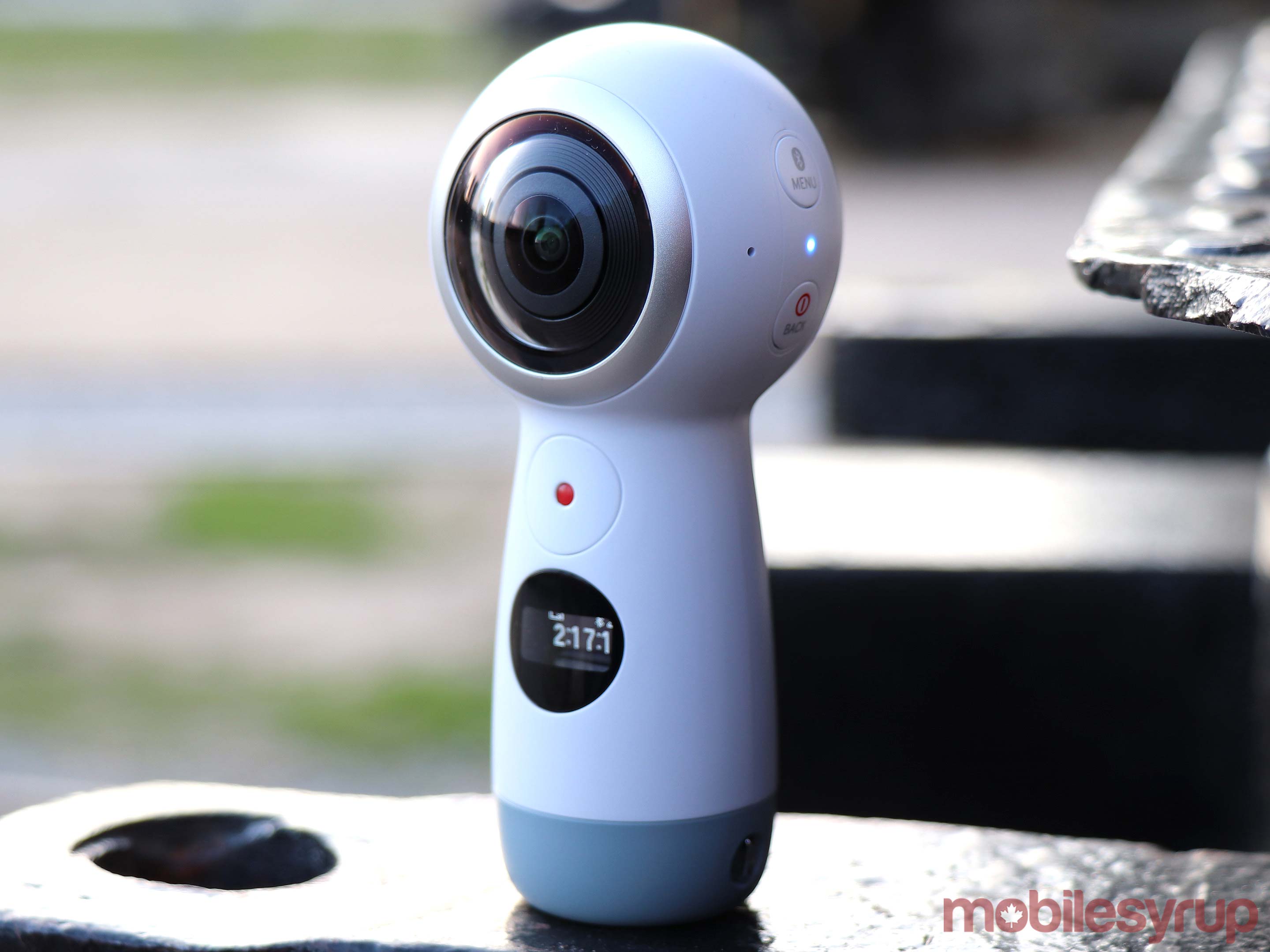
Aside from the different form factor, the usability isn’t all that distinct. Yes, holding it feels different, and I had a much easier time carrying it around, but using the controls felt very much the same.
The menu button doubles for Bluetooth pairing, while the power button doubles as a back button when cycling through the menu. The small OLED displays information the same way, only by having it on the camera’s cylindrical stem, it’s more convenient to make adjustments on the fly. The newly-updated Gear 360 app is infinitely easier because menus and options are more visual and plentiful.
For example, switching video size is a quick couple of taps. It’s here that the limits are clearer too. Shooting fast action at 60fps also knocks down the resolution to 2560 x 1440 pixels. That’s not a huge downgrade, but when spreading it out over two lenses, some sharpness is going to be lost. There is no way to shoot in 4K any higher than 24fps. It gives a nice cinema-style look to images, though isn’t necessarily going to be great for fast-moving close-ups.
Adding iPhone compatibility is a pleasant surprise, and it’s a combination off to a good start. The iOS app is stable and utilizes a similar layout, so it’s not hard to find the right setting or make an adjustment. Samsung hasn’t extended live streaming support to the iPhone, so compatibility isn’t without something missing.

Other Android phones are still left out, and there has been some confusion as to when, or if, they will be included. To my knowledge, Samsung did say that it will add support for devices running 5.0 Lollipop or later, but didn’t specify when it would do so. Either way, that support probably should have been available out of the box. Keeping it in the family for the original Gear 360 is one thing, but maintaining the exclusivity, while adding the iPhone, doesn’t help draw more customers.
It’s a shame, too, because the camera isn’t hard to use. Shooting modes include video, photo, time-lapse video, looping video and landscape HDR still images. HDR is either elective or automatic when shooting in any mode, except for the last one. Both lenses can shoot at once, or you can choose either one to shoot at 180-degrees.
There’s a problem in shooting with only one, and that is the dramatic drop in resolution. A 180-degree photo that maxes out at 3MP is a little like shooting with digital zoom on a smartphone. The middle gets the better of the composition.
To be fair, 360-degree imaging already has plenty of room to grow in improving composition. Zoom in on an image and the artifacts and noise become more readily apparent. Megapixels don’t make or break an image, but when you’re dealing with a much wider aspect ratio and fisheye lenses, it always helps to have more to work with.
Image quality
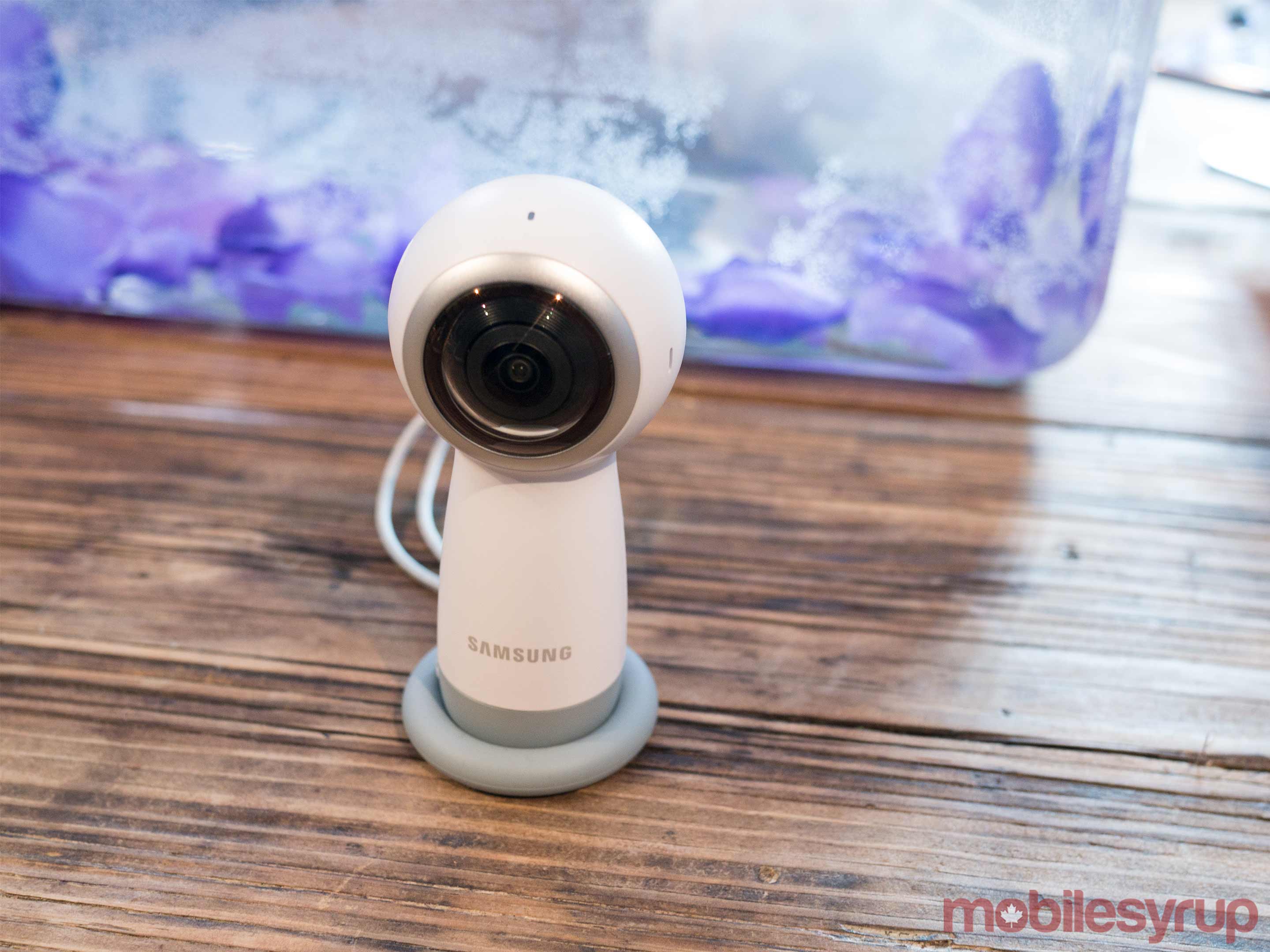
Cramming in larger image sensors would have been possible if Samsung retained last year’s design, but in trimming the fat, it pivoted toward usability over image quality. Under the circumstances, it doesn’t look like they could have both anyway.
What has changed little from last year is that distance helps improve how an image looks. Zoom out to see a warped spherical view of a 360-degree image or video, and the artistic effect becomes easier to appreciate. Any stitching mistakes are also hidden when viewing it that way.
It’s that cross between quality and creating content that makes the trade-off a little more palatable. I relate it to how pocket video cameras (remember the Flip?) first came to market shooting in 480p. At the time, the lack of HD would have been a sore point, but the ability to shoot decent quality video on the fly offset that. Smartphones eventually supplanted those cameras, but the juxtaposition remains, especially for non-flagship handsets that aren’t outfitted with excellent cameras.
Since 360-degree cameras are a unique and nascent category, expectations aren’t especially high right now. For me, the low-light and nighttime results on this Gear 360 are arguably a little worse than they were last year. The tighter aperture is a big reason why, but so is the noise that creeps in. I could adjust ISO to keep it down, except I’m hindered by the aperture. If I go too low on ISO, a dimly-lit subject simply doesn’t look visible.
Transferring video over to the connected phone took longer than I expected, despite a Wi-Fi Direct connection. A two-minute clip took over three minutes to copy over. Granted, part of the delay is because the software automatically transcodes and recompresses the file from H.265 to H.264 to make it playable on the device. It’s a consequence of going with H.265, a superior codec, yet not widely supported yet.
Live streaming and battery life
Speaking of transfers, there’s also the live streaming element. Samsung played this up a lot when unveiling the new Gear 360, but they obviously didn’t note some of the caveats. First, doing this with an LTE connection is risky because of file size. Streaming a one-minute clip won’t cripple your data plan, but do it multiple times, and a good portion could be gone. Doing it over Wi-Fi would be ideal, especially since the H.264 compression noted earlier also applies here, which roughly doubles file size.
As noted, live streaming will only work with compatible Samsung devices, and YouTube, Facebook and Samsung’s own Gear VR service are the only platforms currently available for upload. The sheer ability to live stream in 360-degrees is undeniably cool, and while a little shaky right now, I expect Samsung will fix the kinks and make it a smoother process.
Going smaller also meant trimming down battery capacity to 1,160mAh from 1,350mAh. It’s also non-removable, in case that’s a big deal. The Gear 360 is the kind of camera that is better at shooting spurts rather than a long recording. The time-lapse mode is great for hours of shooting if plugged in to a power source. Footage overwrites itself on the memory card, so there’s no way to lose out on a drawn-out time-lapse video.
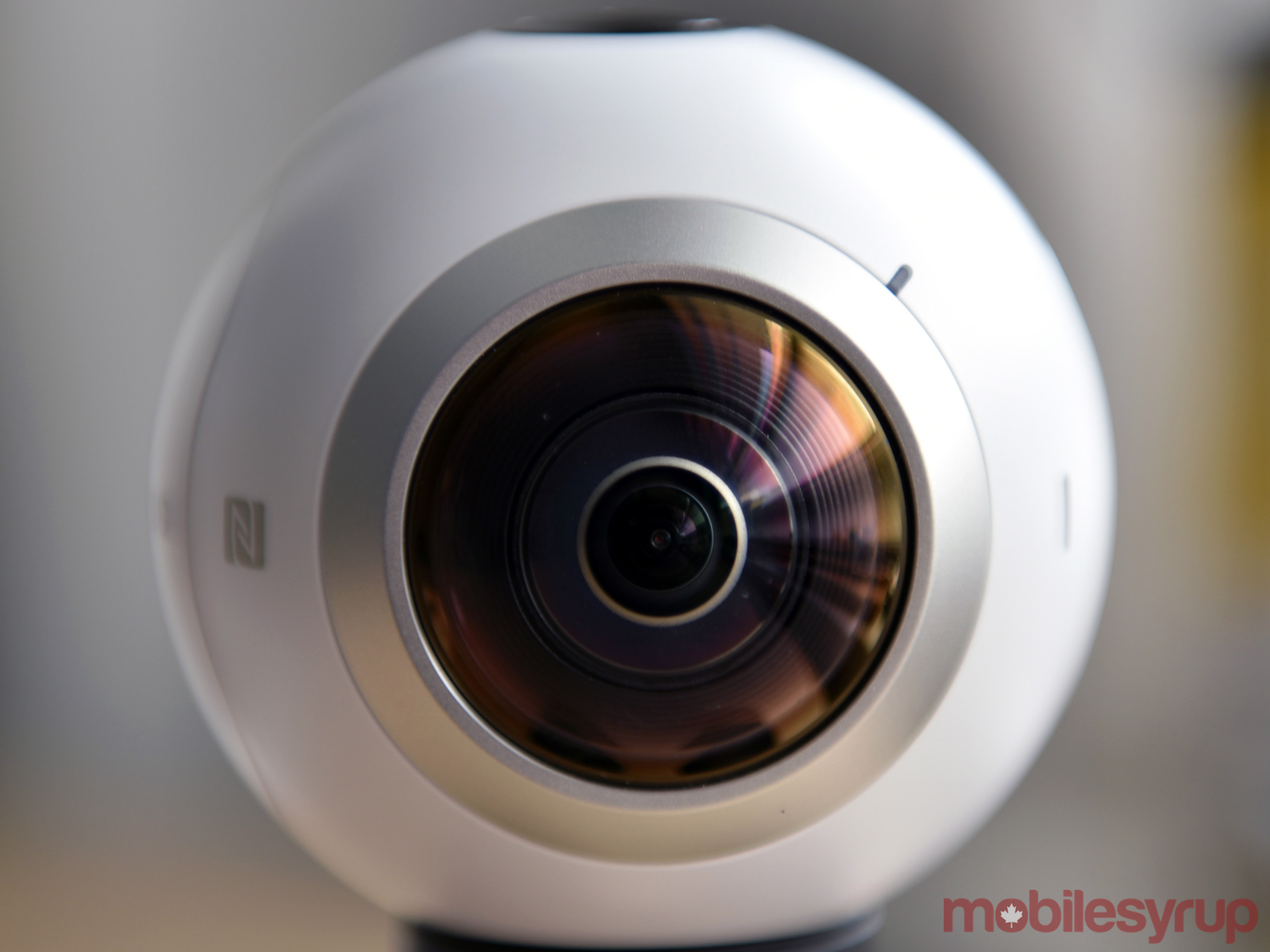
I can’t completely quantify how long the battery lasts because of all the variables involved. The bigger drainer isn’t so much recording video, but rather live view on the phone and transferring content over. Shooting and stopping on the camera itself stretches out the battery longer. The good news is that charging it back up to full doesn’t take all that long.
Wrap up
This Gear 360 is an incremental step forward in making it simpler to shoot footage, yet having less recourse in shooting options. Adding another mode is fine, but with lower resolution, the versatility isn’t entirely well-rounded. What you have is more wieldy camera that can’t match resolution and framerate in varying settings.
Like any 360-degree camera right now, the novelty hasn’t worn off yet. It’s still fun to shoot with one, and the perspective it provides is unparalleled, even if the composition isn’t perfect.
The key is that Samsung needs to sell it at a price that makes sense. A slimmer profile isn’t enough on its own, and given the trade-offs involved, a lower price point than last year’s debut would help garner some interest. Launching this prior to the summer is also timely, compared to the tail end of summer last year.
No firm launch date has been announced, even though the Galaxy S8 and S8+ and new Gear VR headset are already available.
"Like any 360-degree camera right now, the novelty hasn’t worn off yet." 7.5/10
MobileSyrup may earn a commission from purchases made via our links, which helps fund the journalism we provide free on our website. These links do not influence our editorial content. Support us here.

